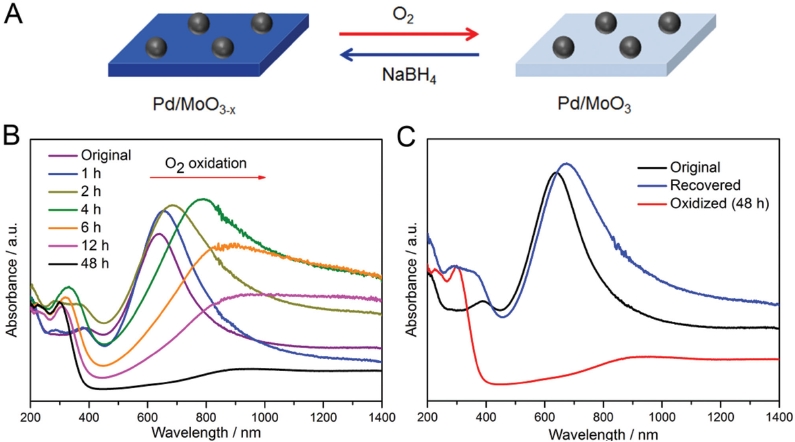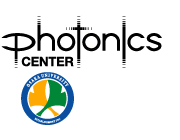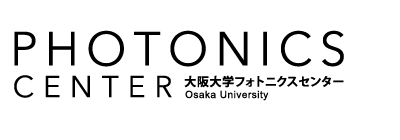【研究成果】2015年
研究成果87
A Plasmonic Molybdenum Oxide Hybrid with Reversible Tunability for Visible-Light-Enhanced Catalytic Reactions
Hefeng Cheng, Xufang Qian, Yasutaka Kuwahara, Kohsuke Mori, and Hiromi Yamashita
Adv. Mater. 2015, 27, 4616–4621
A facile solution reduction process was developed to prepare a semiconductor-based plasmonic Pd/MoO3−x hybrid, which was composed of Pd NPs anchored on MoO3−x plates and displayed intense LSPR in the visible-light region. As a generalized strategy, the synthetic protocol can also be applicable to other metal-NPs-decorated MoO3−x hybrids, such as Au and Pt. The Pd/MoO3−x hybrid underwent reversible tunability in their plasmonic resonance upon oxidation by O2 in air and reduction by NaBH4 in solution, and smaller Pd NPs were able to prolong the retention time of the plasmonic resonance of the hybrid. Under visible-light irradiation, the Pd/MoO3−x hybrid showed significant plasmon-enhanced catalysis for H2 production from NH3BH3 hydrolysis as well as Suzuki–Miyaura coupling reactions compared to dark conditions. This work illustrates the deficient chemistry induced plasmonic hybrid and their plasmon-enhanced catalysis, which provides tunable plasmonics in a wide range and will find more promising applications in solar-energy harvesting and conversion.

A) Schematic illustration of the Pd/MoO3−x hybrid upon oxidation by O2 in air and reduction by NaBH4 in solution. B) The evolution of the optical response of Pd/MoO3−x hybrid exposed to air for different time periods. C) The optical absorption for the original Pd/MoO3−x hybrid, oxidized in air for 48 h, and the recovered product by NaBH4 reduction.



